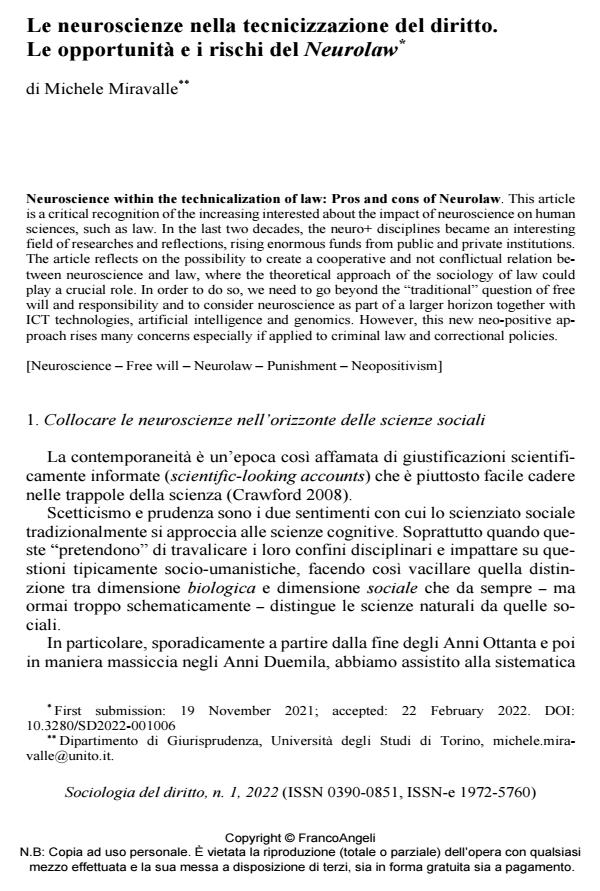Le neuroscienze nella tecnicizzazione del diritto. Le opportunità e i rischi del Neurolaw
Titolo Rivista SOCIOLOGIA DEL DIRITTO
Autori/Curatori Michele Miravalle
Anno di pubblicazione 2022 Fascicolo 2022/1
Lingua Italiano Numero pagine 6 P. 129-152 Dimensione file 272 KB
DOI 10.3280/SD2022-001006
Il DOI è il codice a barre della proprietà intellettuale: per saperne di più
clicca qui
Qui sotto puoi vedere in anteprima la prima pagina di questo articolo.
Se questo articolo ti interessa, lo puoi acquistare (e scaricare in formato pdf) seguendo le facili indicazioni per acquistare il download credit. Acquista Download Credits per scaricare questo Articolo in formato PDF

FrancoAngeli è membro della Publishers International Linking Association, Inc (PILA)associazione indipendente e non profit per facilitare (attraverso i servizi tecnologici implementati da CrossRef.org) l’accesso degli studiosi ai contenuti digitali nelle pubblicazioni professionali e scientifiche
This article is a critical recognition of the increasing interested about the impact of neuroscience on human sciences, such as law. In the last two decades, the neuro+ disciplines became an interesting field of researches and reflections, rising enormous funds from public and pri-vate institutions. The article reflects on the possibility to create a cooperative and not conflictual relation between neuroscience and law, where the theoretical approach of the sociology of law could play a crucial role. In order to do so, we need to go beyond the "traditional" ques-tion of free will and responsibility and to consider neuroscience as part of a larger horizon to-gether with ICT technologies, artificial intelligence and genomics. However, this new neo-positive approach rises many concerns especially if applied to criminal law and correctional policies.
Parole chiave:Neuroscience - Free will - Neurolaw - Punishment - Neopositivism
Michele Miravalle, Le neuroscienze nella tecnicizzazione del diritto. Le opportunità e i rischi del Neurolaw in "SOCIOLOGIA DEL DIRITTO " 1/2022, pp 129-152, DOI: 10.3280/SD2022-001006